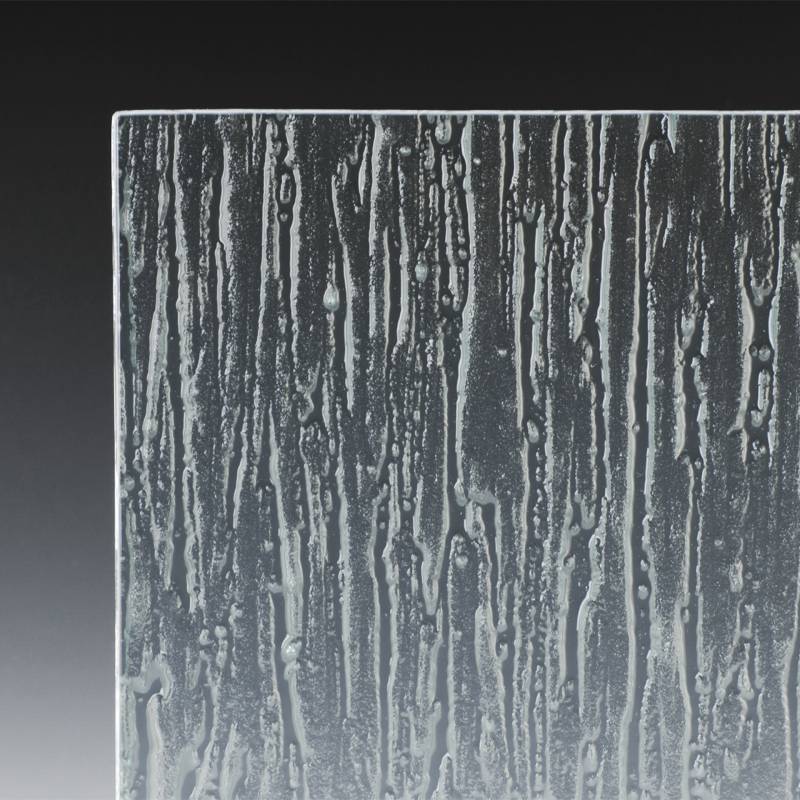The Process of Float Glass Making A Comprehensive Overview
Float glass is a fundamental material used in various applications, from windows to mirrors, due to its clarity and smooth surface. The invention of float glass in the mid-20th century revolutionized the glass industry by providing a more efficient method of production. This article delves into the intricacies of float glass making, detailing its process, advantages, and applications.
The Float Glass Process
The float glass process involves several steps that transform raw materials into high-quality glass. The primary ingredients are silica sand, soda ash, and limestone, which together form the glass batch. Additional additives may include alumina, magnesium, and various coloring agents, depending on the desired properties of the final product.
1. Batch Preparation The first step involves accurately measuring and mixing the raw materials. The quality of the float glass depends heavily on the purity and consistency of the batch. The mixture is then fed into a furnace, where it will be heated to extreme temperatures.
2. Melting In the furnace, the raw materials are heated to temperatures around 1,700°C (3,092°F). This high-temperature environment causes the materials to melt and form molten glass. It is crucial to maintain the right temperature and atmosphere within the furnace to avoid contamination and maintain the glass’s quality.
3. Float Process Once the glass is molten, it is poured out onto a bed of molten tin, which serves as a smooth and level surface. The key to the float process is gravity the molten glass spreads out and floats on the tin, creating a uniform thickness and an incredibly smooth surface. This thin layer of glass can be pulled out to various thicknesses, typically between 2 mm and 12 mm.
4. Annealing After the glass has been formed, it must be cooled gradually in a lehr—a controlled chamber that ensures a uniform cooling rate. This step, known as annealing, is vital to relieve internal stresses in the glass. The cooling rate can influence the glass’s strength and optical properties.
5. Cutting and Finishing Once fully cooled, the glass is cut into sheets of desired sizes. At this stage, additional processes can be applied, such as polishing, coating, or tempering, to enhance specific features or functionalities.
float glass making
Advantages of Float Glass
Float glass offers several advantages that make it a preferred choice in many applications
- Superior Clarity The float process yields a product that is free from distortions and defects, providing excellent optical clarity.
- Uniform Thickness The method allows for precision in thickness, ensuring consistency that is crucial for applications such as architectural windows and automotive glass.
- Ease of Fabrication Float glass can be easily cut, shaped, and treated, making it versatile for various uses, including insulation and safety features.
- Cost-Effectiveness The efficiency of the float glass process reduces production costs, allowing for competitive pricing in the market.
Applications of Float Glass
The widespread use of float glass spans various industries
- Construction Float glass is commonly used in residential and commercial buildings for windows, facades, and interior partitions. Its aesthetic appeal and energy efficiency make it an ideal choice for modern architecture.
- Automotive The automotive industry employs float glass for windshields and windows, where clarity and safety are paramount.
- Electronics Float glass is increasingly used in creating glass panels for electronic displays due to its smooth surface and optical properties.
- Art and Design Artists and designers utilize float glass in countless creative projects, from decorative panels to stained glass works.
Conclusion
Float glass making is a fascinating blend of art and science, resulting in a material that is essential across various industries. Its production process, from raw materials to finished products, illustrates the intricate steps involved in creating something that we often take for granted. As technology advances, the float glass industry continues to innovate, improving its properties and expanding its applications, thereby reinforcing its indispensable role in our daily lives.
 Afrikaans
Afrikaans  Albanian
Albanian  Amharic
Amharic  Arabic
Arabic  Armenian
Armenian  Azerbaijani
Azerbaijani  Basque
Basque  Belarusian
Belarusian  Bengali
Bengali  Bosnian
Bosnian  Bulgarian
Bulgarian  Catalan
Catalan  Cebuano
Cebuano  Corsican
Corsican  Croatian
Croatian  Czech
Czech  Danish
Danish  Dutch
Dutch  English
English  Esperanto
Esperanto  Estonian
Estonian  Finnish
Finnish  French
French  Frisian
Frisian  Galician
Galician  Georgian
Georgian  German
German  Greek
Greek  Gujarati
Gujarati  Haitian Creole
Haitian Creole  hausa
hausa  hawaiian
hawaiian  Hebrew
Hebrew  Hindi
Hindi  Miao
Miao  Hungarian
Hungarian  Icelandic
Icelandic  igbo
igbo  Indonesian
Indonesian  irish
irish  Italian
Italian  Japanese
Japanese  Javanese
Javanese  Kannada
Kannada  kazakh
kazakh  Khmer
Khmer  Rwandese
Rwandese  Korean
Korean  Kurdish
Kurdish  Kyrgyz
Kyrgyz  Lao
Lao  Latin
Latin  Latvian
Latvian  Lithuanian
Lithuanian  Luxembourgish
Luxembourgish  Macedonian
Macedonian  Malgashi
Malgashi  Malay
Malay  Malayalam
Malayalam  Maltese
Maltese  Maori
Maori  Marathi
Marathi  Mongolian
Mongolian  Myanmar
Myanmar  Nepali
Nepali  Norwegian
Norwegian  Norwegian
Norwegian  Occitan
Occitan  Pashto
Pashto  Persian
Persian  Polish
Polish  Portuguese
Portuguese  Punjabi
Punjabi  Romanian
Romanian  Russian
Russian  Samoan
Samoan  Scottish Gaelic
Scottish Gaelic  Serbian
Serbian  Sesotho
Sesotho  Shona
Shona  Sindhi
Sindhi  Sinhala
Sinhala  Slovak
Slovak  Slovenian
Slovenian  Somali
Somali  Spanish
Spanish  Sundanese
Sundanese  Swahili
Swahili  Swedish
Swedish  Tagalog
Tagalog  Tajik
Tajik  Tamil
Tamil  Tatar
Tatar  Telugu
Telugu  Thai
Thai  Turkish
Turkish  Turkmen
Turkmen  Ukrainian
Ukrainian  Urdu
Urdu  Uighur
Uighur  Uzbek
Uzbek  Vietnamese
Vietnamese  Welsh
Welsh  Bantu
Bantu  Yiddish
Yiddish  Yoruba
Yoruba  Zulu
Zulu 

